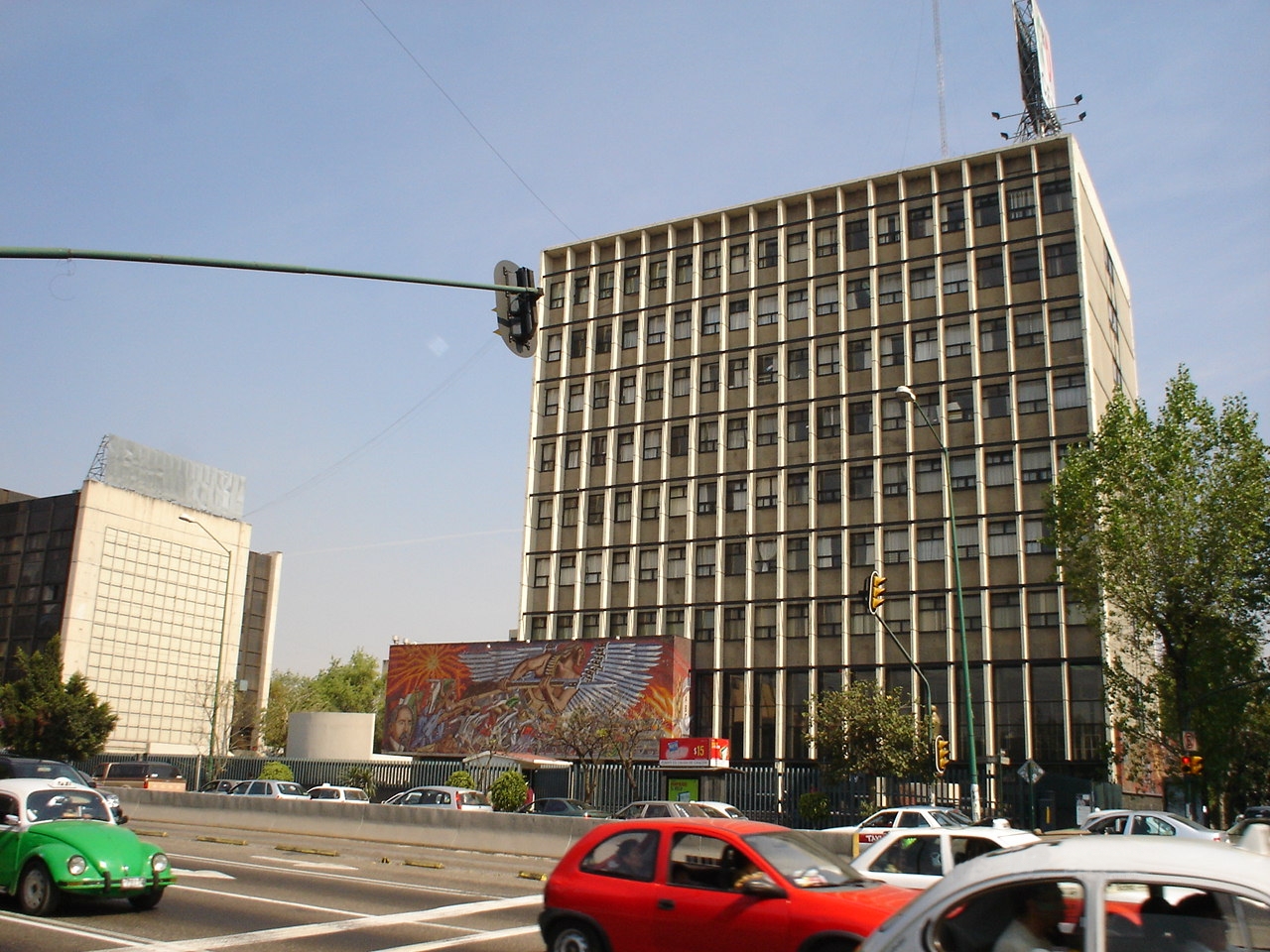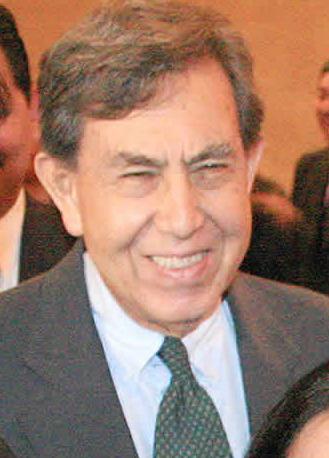|
1994 Mexican General Election
General elections were held in Mexico on 21 August 1994. Nohlen, D (2005) ''Elections in the Americas: A data handbook, Volume I'', p453 The presidential elections resulted in a victory for Ernesto Zedillo of the Institutional Revolutionary Party (PRI), whilst the PRI won 300 of the 500 seats in the Chamber of Deputies and 95 of the 128 seats in the Senate. Voter turnout ranged from 77.4% in the proportional representation section of the Chamber elections to 75.9% in the constituency section. These were the first presidential elections in Mexico that were monitored by international observers. Turnout was just over 77% of those eligible. To date, the 1994 elections mark the last time a presidential candidate won in all 31 states and Mexico City. Although tension did not reach the level it did around the 1988 election, most political analysts agree that voters (in the aftermath of the Zapatista uprising that began in January and the assassination of the original PRI candidate L ... [...More Info...] [...Related Items...] OR: [Wikipedia] [Google] [Baidu] |
Percentage Point
A percentage point or percent point is the unit (measurement), unit for the Difference (mathematics), arithmetic difference between two percentages. For example, moving up from 40 percent to 44 percent is an increase of 4 percentage points, but a 10-percent increase in the quantity being measured. In literature, the unit is usually either written out, or abbreviated as ''pp'' or ''p.p.'' to avoid ambiguity. After the first occurrence, some writers abbreviate by using just "point" or "points". Differences between percentages and percentage points Consider the following hypothetical example: In 1980, 50 percent of the population smoked, and in 1990 only 40 percent of the population smoked. One can thus say that from 1980 to 1990, the prevalence of smoking decreased by 10 ''percentage points'' (or by 10 percent of the population) or by ''20 percent'' when talking about smokers only - percentages indicate proportionate part of a total. Percentage-point differences are one way to ex ... [...More Info...] [...Related Items...] OR: [Wikipedia] [Google] [Baidu] |
Zapatista Uprising
On January 1, 1994, the Zapatista Army of National Liberation (EZLN) coordinated a 12-day Zapatista uprising in the state of Chiapas, Mexico in protest of NAFTA's enactment. The revolt gathered international attention. Background Disease, enslavement, and exploitation have affected and devastated many American Indigenous communities, and the effects of colonization have continued to affect Mexican Indigenous communities. Indigenous people make up 15% of Mexico's population, and in 2011, the demographic also made up the majority of the 18% of Mexico's population living with food insecurity. About a third of people in Mexico's southernmost state of Chiapas identify as indigenous. The state has the second highest poverty rate following the state of Guerrero. About half of the Indigenous population in Chiapas reported no income in the 2010 census with another 42% of individuals earning less than $5 a day. Indigenous people in the state have also been impacted by malnutrition as well ... [...More Info...] [...Related Items...] OR: [Wikipedia] [Google] [Baidu] |
Pacific Time Zone
The Pacific Time Zone (PT) is a time zone encompassing parts of western Canada, the western United States, and western Mexico. Places in this zone observe standard time by subtracting eight hours from Coordinated Universal Time ( UTC−08:00). During daylight saving time, a time offset of UTC−07:00 is used. In the United States and Canada, this time zone is generically called the Pacific Time Zone. Specifically, time in this zone is referred to as Pacific Standard Time (PST) when standard time is being observed (early November to mid-March), and Pacific Daylight Time (PDT) when daylight saving time (mid-March to early November) is being observed. In Mexico, the corresponding time zone is known as the ''Zona Noroeste'' (Northwest Zone) and observes the same daylight saving schedule as the U.S. and Canada. The largest city in the Pacific Time Zone is Los Angeles, whose metropolitan area is also the largest in the time zone. The zone is two hours ahead of the Hawaii–Aleut ... [...More Info...] [...Related Items...] OR: [Wikipedia] [Google] [Baidu] |
Monumento A La Revolución
The Monument to the Revolution ( es, Monumento a la Revolución, links=no) is a landmark and monument commemorating the Mexican Revolution. It is located in the Plaza de la República, near to the heart of the major thoroughfares Paseo de la Reforma and Avenida de los Insurgentes in downtown Mexico City. History The building was initially planned as the Federal Legislative Palace during the regime of president Porfirio Díaz and "was intended as the unequaled monument to Porfirian glory." The building would hold the congressional chambers of the deputies and senators, but the project was not finished due to the Mexican Revolutionary War. Twenty-five years later, the structure was converted into a monument to the Mexican Revolution by Mexican architect Carlos Obregón Santacilia. The monument is considered the tallest triumphal arch in the world, standing in height. Porfirio Díaz appointed a French architect, Émile Bénard to design and construct the palace, a neoclassical ... [...More Info...] [...Related Items...] OR: [Wikipedia] [Google] [Baidu] |
Chiapas
Chiapas (; Tzotzil language, Tzotzil and Tzeltal language, Tzeltal: ''Chyapas'' ), officially the Free and Sovereign State of Chiapas ( es, Estado Libre y Soberano de Chiapas), is one of the states that make up the Political divisions of Mexico, 32 federal entities of Mexico. It comprises Municipalities of Chiapas, 124 municipalities and its capital and largest city is Tuxtla Gutiérrez. Other important population centers in Chiapas include Ocosingo, Tapachula, San Cristóbal de las Casas, Comitán, and Arriaga, Chiapas, Arriaga. Chiapas is the southernmost state in Mexico, and it borders the states of Oaxaca to the west, Veracruz to the northwest, and Tabasco to the north, and the Petén Department, Petén, Quiché Department, Quiché, Huehuetenango Department, Huehuetenango, and San Marcos Department, San Marcos departments of Guatemala to the east and southeast. Chiapas has a significant coastline on the Pacific Ocean to the southwest. In general, Chiapas has a humid, tropical ... [...More Info...] [...Related Items...] OR: [Wikipedia] [Google] [Baidu] |
Manuel Camacho Solís
Víctor Manuel Camacho Solís (March 30, 1946 – June 5, 2015) was a Mexican politician who served in the cabinets of presidents Miguel de la Madrid and Carlos Salinas. Born in Mexico City to Manuel Camacho López and Luz Solís, he belonged to the . At first he was affiliated with the PRI, later with the Party of the Democratic Center and then with the Party of the Democratic Revolution. Political career Camacho Solís joined the Institutional Revolutionary Party (PRI) in 1965, and in 1988 he became that party's general secretary. Camacho met Carlos Salinas at the National Autonomous University of Mexico (UNAM), where they became close friends. Camacho followed Salinas's trajectory in the Planning Ministry under the administration of Miguel de la Madrid. In 1985 he was elected to the Chamber of Deputies, and in 1986 he was appointed to the cabinet as Minister of Urban Development. When Salinas took over the presidency in 1988, Camacho was appointed Head of Government of t ... [...More Info...] [...Related Items...] OR: [Wikipedia] [Google] [Baidu] |
Partido Revolucionario Institucional
The Institutional Revolutionary Party ( es, Partido Revolucionario Institucional, ; abbr. PRI) is a political party in Mexico that was founded in 1929 and held uninterrupted power in the country for 71 years, from 1929 to 2000, first as the National Revolutionary Party ( es, Partido Nacional Revolucionario, PNR), then as the Party of the Mexican Revolution ( es, Partido de la Revolución Mexicana, PRM) and finally as the PRI beginning in 1946. The PNR was founded in 1929 by Plutarco Elías Calles, Mexico's paramount leader at the time and self-proclaimed (Supreme Chief) of the Mexican Revolution. The party was created with the intent of providing a political space in which all the surviving leaders and combatants of the Mexican Revolution could participate and to solve the severe political crisis caused by the assassination of President-elect Álvaro Obregón in 1928. Although Calles himself fell into political disgrace and was exiled in 1936, the party continued ruling Mexico u ... [...More Info...] [...Related Items...] OR: [Wikipedia] [Google] [Baidu] |
Partido De La Revolucion Democratica
The Party of the Democratic Revolution (PRD, es, Partido de la Revolución Democrática, ) is a social democratic political party in Mexico. The PRD originated from the Democratic Current, a political faction formed in 1986 from the Institutional Revolutionary Party (PRI). The PRD was formed after the contested general election in 1988, which the PRD's immediate predecessor, the National Democratic Front, believed was rigged by the PRI. This sparked a movement away from the PRI's authoritarian rule. As of 2020, the PRD is a member of the Va por México coalition. Internationally, the PRD is a member of the Progressive Alliance. The members of the party are known colloquially in Mexico as ''Perredistas''. History Early origins Break from the PRI (1986–1988) The PRD has its origins with the leftist members of the PRI, Institutional Revolutionary Party. The PRI had dominated Mexican politics since its founding in 1929. In 1986, a group of PRI members – including Ifigeni ... [...More Info...] [...Related Items...] OR: [Wikipedia] [Google] [Baidu] |
.jpg)

